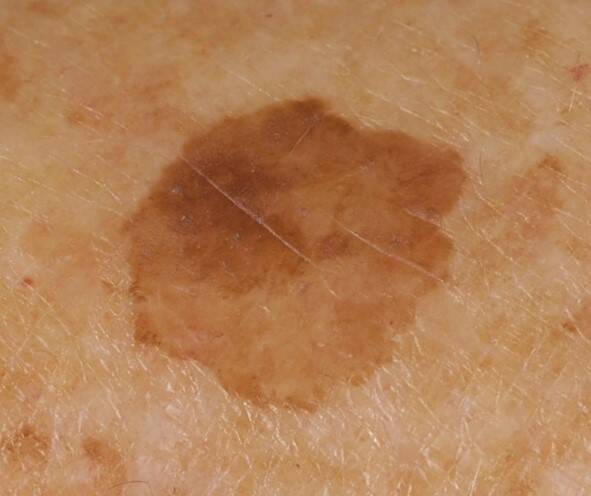Why stop practising so early?
I ended my practice in dermatology at Carolus Hospital on June 1, 2002. This came as a surprise to many, which is understandable, because I was 51 years old at the time, much too young to retire. There were several reasons for my decision to stop my work. The most important were medical in nature. At the time, I had been suffering from pain in my right wrist for over 2 years, as a manifestation of inflammation consistent with the skin disease psoriasis, which I have had since I was thirteen. The inflammations were localized in the joints of the wrist (psoriatic arthritis), in various tendons including the Achilles tendon (psoriatic enthesitis), and the fascia of the feet (plantar fasciitis). The pain and inflammation responded reasonably but yet insufficiently to painkillers and anti-inflammatories. It wasn't so much that I couldn't work or that I was hindered from performing minor surgical procedures properly, but I didn't shake hands with my patients all this time because it was too painful. The assistants always told patients in advance that I didn't shake hands with them because I had some 'wrist problems'. I found that very annoying, because shaking hands is an integral and important part of the consultation. And patients who came back more than once would respond with 'so, that's taking a long time', or 'gosh, still?'. Some asked what the problem exactly was had and there was also sometimes - quite understandably - concern from people who were about to have or were undergoing surgery or sclerotherapy of varicose veins.
There was something else: I suffered from serious back pain and every day around twelve o'clock a considerable headache set in. It probably came from my neck, which was often tense when I had to bend over patients: 'tension headache'. In retrospect, I have come to realize that inflammation in the spine as a result of psoriasis may have also played a role. Consultation of the orthopedist, the manual therapist and injections of local anesthetics by the anesthetist did not improve this. And the rheumatologist could not do much more than prescribe (other) painkillers and anti-inflammatories for the arthritis, enthesitis and psoriatic fasciitis.

Changing hospital care in 's-Hertogenbosch
A second reason for stopping early was the future of hospital care in 's-Hertogenbosch. The Groot Ziekengasthuis in the city had already merged with the Willem-Alexander Hospital a few years before and now a second merger was imminent: with the Carolus Hospital into one large medical center, which would later be called the Jeroen Bosch Hospital. With the merger, all partnerships would also have to merge and not everyone was in the mood for that. This certainly applied to me: I turned out to be the only one who voted against the merger during the staff meeting. Why didn't I want to merge and form a partnership with the other dermatologists? Well, some colleagues had a slightly different view of how to run a practice, but – I have to be honest – my reluctance was largely my own. I was very attached to the solo practice that I have always had and especially that I could make all decisions regarding the practice myself. I have some authoritarian tendencies and have a bit of a stubborn character, and that would inevitably lead to conflicts in a partnership. I had little appetite for that: I had seen too many conflicts in my time as Chairman of the medical staff.
A little less fun
There was a third reason – and I say this with some embarrassment and reluctantly – for leaving the practice at a young age: I was getting a bit bored with the private dermatology practice and gradually found it less and less enjoyable. I had already started at the age of 28, so I had practiced for 22.5 years. By now I had gained so much experience that I was able to diagnose and treat more than 90% of all skin diseases and abnormalities presented to me on my spinal cord, so to speak. At that time, general practitioners often referred patients with simple skin disorders to dermatologists which are currently treated by themselves. Think of common warts, mild atopic eczema, benign pigmentation spots, unsightly 'warts' (ripened birthmarks) on the face or fibroids ('skin tags') in the neck or under the armpit to burn away, and actinic keratoses, just to name a few.


Lentigo solaris (benign pigment spot) Skin tags (fibromas, fibroids)
This 'small pathology' was good for business (the older dermatologists used to call the warts the 'currants in the pie'), but if you do the same thing day after day and have little intellectual challenge, it can get a bit boring. I realize, of course, that many other people, in all kinds of professions, experience exactly the same. The constant pressure to prevent the waiting room from filling up (which incidentally rarely happened in recent years, most patients did not have to wait longer than 10 minutes and usually even shorter) always caused some tension. In addition, there had been many renovations in Carolus Hospital in the years before, including just below us. Noise every day for months and the sound of the jackhammer and the circular saw, sometimes so loud that it was almost impossible to have a decent conversation with the patients, had caused a lot of stress.
Farewell dermatology?
When I left the practice, I assumed that I had said goodbye to dermatology. As you can read in many chapters on this website - fortunately - this has not come true. On the contrary, after a few transitional years I have been involved with dermatology to this day, not with patient care, but with the scientific side of it, especially contact allergy.

